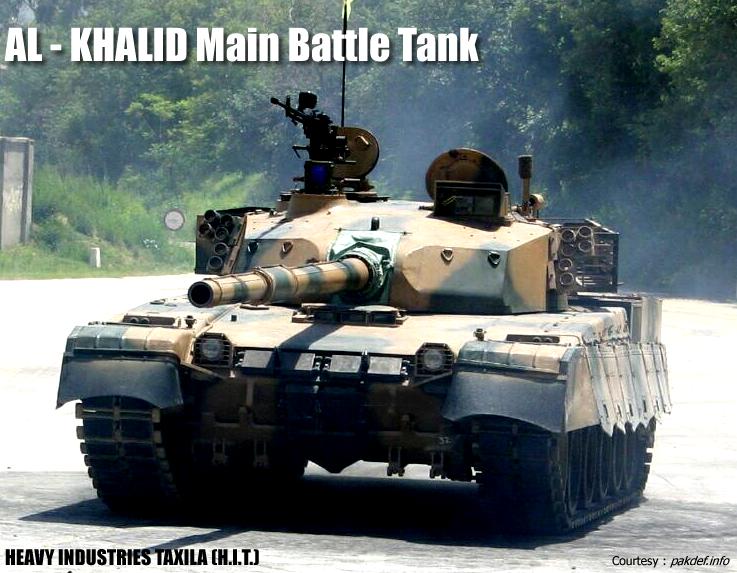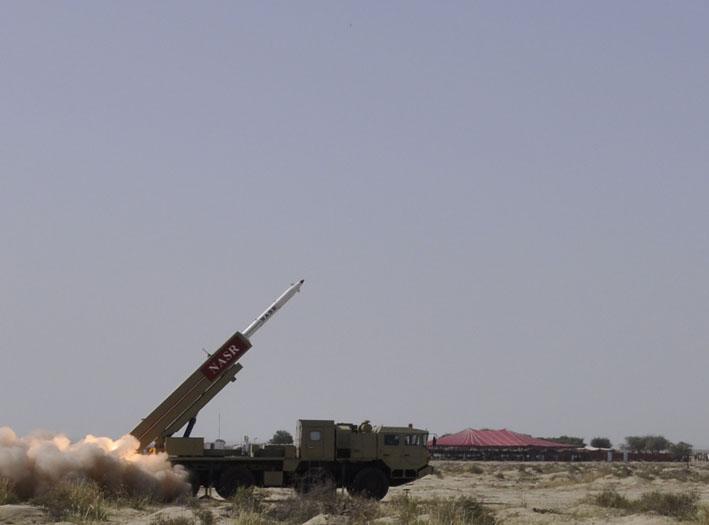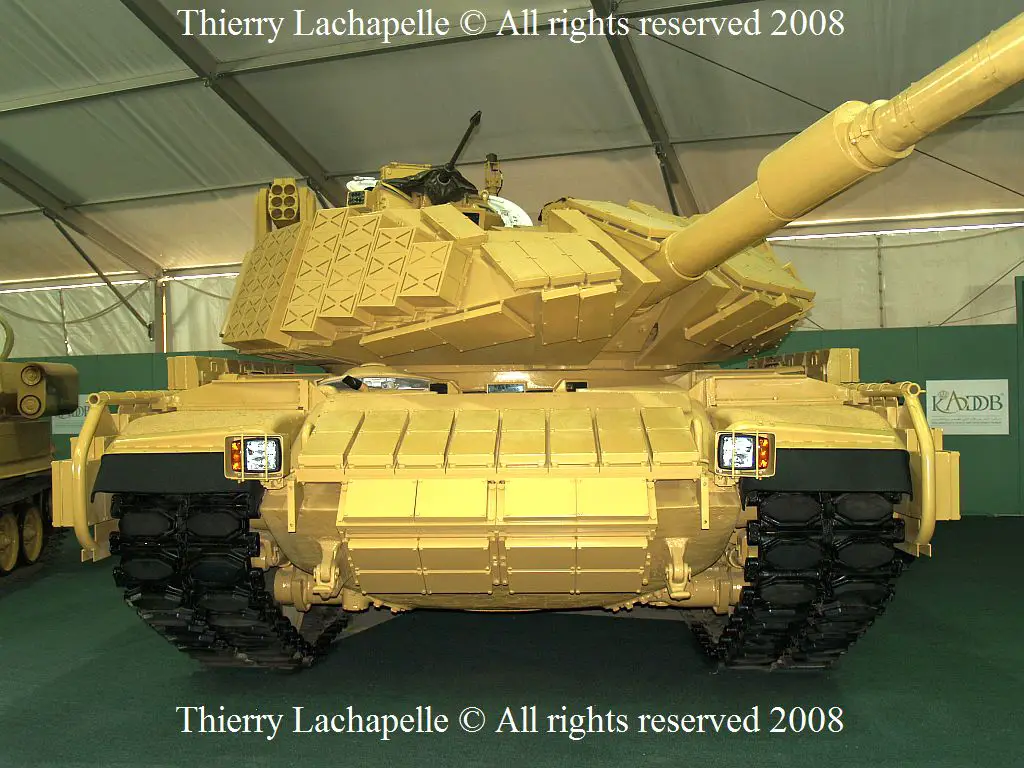http://www.pakdef.info/pakmilitary/army/companies.html
Pakistan Arms Industry
Armament Research & Development Establishment
Rawalpindi, Pakistan
Armament Research & Development Establishment (ARDE), since its inception in 1974 has been undertaking research and development in the field of arms and ammunitions and has contributed significantly in establishing development and production base through collaboration with public and private sectors. Major accomplishments of ARDE are weapons and tank ammunition.
Defence Science & Technology Organization
Rawalpindi, Pakistan
The Defence Science & Technology Organization (DESTO) is the premier defence Research and Development organization of Defence Production Division, Ministry of Defence, Government of Pakistan. DESTO conducts research and development around weapons and weapon systems and renders professional advice on the application of science and technology.
DESTO’s research and development environment covers a wide spectrum of fields, under the broad disciplines of aerodynamics, propulsion, defence electronics, computer systems, engineering, propellants, explosives, materials and chemical & biological defence etc. Besides providing scientific and technical support to other research & development as well as production establishments of Ministry of Defence, DESTO’s multi-disciplinary infrastructure and technology base is available to public sector industry under commercial arrangements.
While the DESTO Headquarters are located at Chaklala for providing policy advice, liaison and organizational management, DESTO’s R&D infrastructure is located at the following different physical locations:
# DESTO Laboratories Complex, Chattar
# DESTO Laboratories, Karachi
# DESTO Laboratories, Chaklala
Institute of Optronics
Ministry of Defence, Chaklala-Rawalpindi, Pakistan
Institute of Optronics (IOP) has established state-of-the-art military specifications production and testing facilities of night vision devices, based on Image Intensifier Tubes. The Night Vision Systems, without turning the night into day, vastly improve the ability of the Armed Forces to undertake a number of vital functions related to force effectiveness. Command and control, surveillance, movements both tactical and logistical and accuracy of firepower are some of the areas of activities in which the Night Vision Devices are playing a formidable and vital role.
Institute of Optronics is playing a key role in this field and has established Military Specifications production and testing facilities of following night vision devices, based on second generation Image Intensifier Tubes:
# Individual Served Night Vision Weapon Sight (Equivalent to AN / PVS - 4A)
# Crew Served Night Vision Weapon Sight (Equivalent to AN / TVS - 5A)
# High Performance Night Vision Goggles (Equivalent to AN / PVS - 5C)
# High Performance Night Vision Binoculars (Equivalent to NVB - 4A and NVB - 5A)
# Driver’s Night Vision Periscope (DNVP - 1A)
# Aviator’s Night Vision Goggle
An indigenization programme to progressively develop and manufacture components in Pakistan for night vision systems is being vigorously pursued. The future plans of this institute include the establishment of facilities for night vision devices based on Thermal Imaging Techniques for all types of armoured vehicles and helicopters.
Besides meeting the night vision requirements of the Armed Forces of Pakistan, this institute has exported these to friendly countries.
Karachi Shipyard & Engineering Works Ltd.
Karachi, Pakistan
KSEW is ISO - 9002 Certified for Shipbuilding, Submarine & Warship Construction and General Engineering Works. The present services are:
# Shipbuilding of all types of vessels and craft of upto 26,000 TDW
# Small submarines and warship / support craft like Missile Craft, Patrol Craft, Diving Boats, Towed Array Barge, Floating Docks, Berthing / Pusher Tugs, Oil / Water carriers, boats etc.
# Underwater repairs of ships of upto 26,000 TDW and above water repairs to any type or size
# Wide variety of engineering plants and machinery like tankages, pressure vessels, LPG storage tanks, overhead, luffing and other types of electrically operated cranes, equipment of oil, gas, petrochemical industries, steel structures for dams, barrages, thermal power plants and similar other industrial plants, components for cement mills, complete sugar plants, Firetube boilers, watertube boilers etc.
# Iron castings of upto 15 tons a piece, steel castings of upto 3 tons a piece and non-ferrous / alloy castings of upto 750 kg a piece
# Physical, chemical, metallographic and non-destructive testing of various raw materials, components etc. Testing according to requirements of ISO - 9000 and international classification societies standards also undertaken
Margalla Electronics
Islamabad, Pakistan
Margalla Electronics (ME) was created in 1984 as a self reliance project under the Defence Production Division to support the Defence Services in the field of electronics. The support includes:
# Repair and rebuild of electronic equipment used by the services
# Applied research to improve equipment performance and reliability
# Original design and production
Within a short span of time ME has accumulated sophisticated skills and hardware necessary for assembling, testing, and repairing of various types of military electronics products. ME has co-produced and fielded sophisticated state-of-the-art radar systems and communications equipment jointly with various international companies.
Military Vehicles Research And Development Establishment
Rawalpindi, Pakistan
Military Vehicles Research and Development Establishment’s (MVRDE) creation in 1972 owes itself to the national resolve to explore and build upon our indigenous technical and industrial potential. MVRDE is thus fully involved in mobilizing, orientating and developing our public and private industrial sector to achieve progressive self-reliance in defence equipment.
MVRDE is a multi-disciplinary organization capable of conducting research and development pertaining to military vehicles, engineers equipment and defence-related mechanical systems. Its infrastructure encompasses a wide spectrum of facilities under following broad categories:
# R & D Sections
# To carry out design, development and product up gradation in following categories:
# Armoured Vehicles - Tanks, APCs, ARVs
# Wheeled Vehicles - GS and special Purpose
# Engineers Equipment - Earthmoving machinery, Cranes etc.
National Development Complex
Islamabad, Pakistan
National Development Complex (NDC) was created with an objective of developing an infrastructure for indigenous weapons development, provision of technical services, and achieving self-reliance in diverse technologies related to these areas. NDC is delivering reliable and state-of-the-art weapon systems and military hardware at competitive prices. Since its creation, NDC has made remarkable progress in developing and producing a diverse range of defence products.
Pakistan Aeronautical Complex
Kamra District Attock, Pakistan
The conception of idea to establish Pakistan Aeronautical Complex dates back to the early seventies. The rationale behind this idea was both economic and strategic. The aim before the policy makers was to create an indigenous production facility in which aircraft and engines could be overhauled and repaired without sending them abroad and doling out large sums of foreign exchange. Later years saw expansion in the role of PAC in terms of aircraft and engines production, upgrade programmes and joint ventures.
Since inauguration of the first of its four factories in 1978, Pakistan Aeronautical Complex has not looked back. In the two decades, it has vastly expanded the scope of work, commenced new and more challenging projects, created a veritable centre of excellence in military aviation and information technology, and above all, realised the original goal of self-reliance. Eversince its inception, Pakistan Aeronautical Complex has become the backbone of Pakistan Air Force in maintenance; supporting its major weapon systems by providing rebuild services for aircraft, engines and components; providing spare support, structural repairs and major rectification. Manufacture of Mushshak aircraft and collobaration with China in K-8 jet trainer programme are landmark achievements of PAC which have lent tremendous creditability to this industry. More recently PAC has also ventured into the area of system upgrades and manufacture of airborne avionics systems in partnership with some foreign collobarations. Having acquired necessary resources and expertise. PAC is fast expanding its role and making all-out efforts to turn itself into a self-supporting outfit. Already, it is ensuring that the country spends least amount of foreign exchange on maintenance of the PAF fleet of fighter and trainer aircraft. Except for import of certain essential spares, rest everything is produced or repaired locally.
In PAC, quality of products and services occupies the fundamental importance. Quality received tremendous boost recently when the four factories of this complex were certified to ISO-9000 quality management system by the leading international auditing firms. This has enormously enhanced the prestige and the credentials of this complex with the aviation circles around the world. They now consider us serious contenders for joint ventures and partnerships. With this, PAC is now committed to a standard which can neither be lowered nor compromised in future.
Pakistan Navy Dockyard
Karachi, Pakistan
PN Dockyard since its inception in 1952 has been undertaking repair works, modernization and rebuild of PN Ships, Submarines and Crafts. Pakistan Navy Dockyard is providing technical assistance, rebuild and repair of a wide range and diversity of equipment of PN Fleet and has undertaken fleet modernization and up gradation programmes with success. PN Dockyard has developed capability to undertake ambitious and indigenous construction projects like Missiles Boats, Mines Counter Measure Vessel (MCMV) and AGOSTA 90 - B Submarine.
Pakistan Ordnance Factories (POF)
Wah Cantonnement, Pakistan
During the Second World War, British used the sub-continent as a spring-board and a logistics base to conduct its campaigns in the Eastern Theatre. Towards this end they developed massive logistics infrastructure, including sixteen Ordnance Factories.
In 1947 at the time of independence, Pakistan could not get even a single Ordnance Factory. First Prime Minister conceived a Plan in December 1947 and decided to establish an Ordnance Factory. The second Prime Minister inaugurated Civil Works for four Factories at Wah in December 1951, 36 kilometers north of present Federal Capital Islamabad.
During Wars of 1965 & 1971 un-justified and unilateral arms embargo jolted Pakistan and serious thought was given to self-reliance.
POF of the late fifties was producing .303 Rifle, its ammunition, 25 Pounder Artillery ammunition, 40 mm Anti Aircraft ammunition, M36 hand grenade, 2”and 3” Mortar Bombs and 500 lbs and 750 lbs Aircraft Bombs.
It was a turning point in the history of POF as it went through modernization and expansion over the next two and half decades. Today POF is a gigantic industrial complex with fourteen factories and eight subsidiaries employing a total work force of over 33,000.
Dr A Q Khan Research Laboratories
Rawalpindi, Pakistan
Al - Technique Corporation of Pakistan (pvt) Ltd
Islamabad, Pakistan
Established in 1986, Al Technique Corporation of Pakistan, (ATCOP) has quickly established itself as Pakistan’s premier organization in the field of LASERs and modern optics. Situated some 20 Km outside Islamabad in the picturesque Potohar plateau, its Electro Optics Division has pioneered the growth of LASER sciences and electronics technology in the country.
With a work space of 7500 sq. m. and a staff of nearly 400 highly trained personnel (with over 70 engineers and scientists), ATCOP has set up a broad array of technical facilities and expertise making it one of the most integrated facility in the country. It is self - sustaining in the five major technical areas of:
# LASER and Optics
# Design of Components / Complete Systems
# Measurement & Evaluation
# Electronics
# Mechanics
# Testing
ATCOP is therefore engaged in R & D and production of electro optics and LASER systems as well as in V / UHF communication, with nearly 30% of its annual turnover of US$ 5.0 million being spent on R & D or collaboration with universities.
AL-Sons Industries (PVT) LTD
Karachi, Pakistan
Alsons is the pioneer precision engineering private industry that was set up Pakistan in 1953. Its first product was Clocks. Progressive innovations and high tech tooling enabled Alsons to manufacture specialized engineering high tech products. Alsons Group has three factories of which two are in Karachi and one is in Islamabad.
Following are the three companies under Alsons Group management :
Alsons Industries (Pvt.) Ltd.
Defence Products
Alsons Auto Parts (Pvt.) Ltd.
Automotive Products
Two Feeder Units
Plastic Injection Molding and Precision Machining Parts
Since 1968, Alsons is engaged in manufacturing of highly precision engineering products for Armed Forces of Pakistan. The modern and fully integrated manufacturing plant, with built-up area of 10,000 sq. meters and 450 employees, is equipped with most advanced CNC turning centers provides an wide range of production and assembly technology. It has its own R & D.
Al Mustafa Engineers
Lahore, Pakistan
Pakistan Aeronautical Complex (PAC)
Aircraft Manufacturing Factory, Kamra District Attock
Heavy Industries Taxila (HIT)
APC Factory, Taxila Cantt
Machinecrafts (Private) Limited
Lahore, Pakistan
Alsons Industries (Pvt) Ltd
Karachi, Pakistan
Military Vehicle Research and Development Establishment
Alsons Industries (Pvt) Ltd
Karachi, Pakistan
Service Industries Limited
Lahore, Pakistan
Daudsons Armoury
Peshawar, Pakistan































